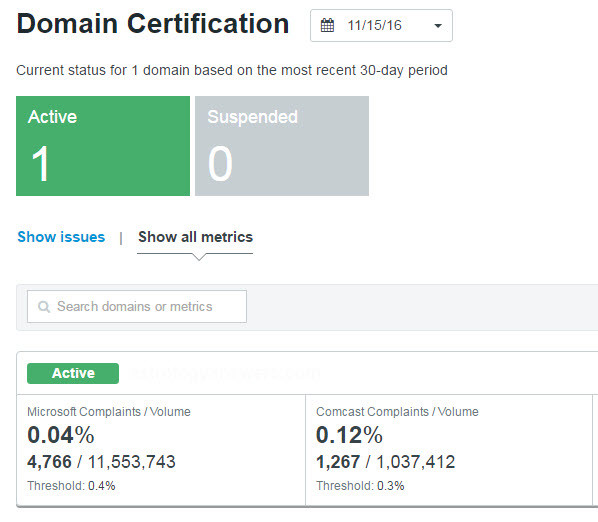Source: ReturnPath
This is my favorite time of the year! Holiday shopping sales, personalized email incentives, oh and lots of cookies! But this is also the time of the year where we reflect upon 2016 as a whole. 2016 like most years was a big year for email and for Return Path.
Return Path 2016—A Year in Review
New Seeds
In March of 2016, Return Path added hundreds of new seeds to customer’s seed lists for AOL, Gmail, Yahoo, and Microsoft. This allowed for customers to receive different seeds so that they didn’t run the risk of throttling as well as offering a more robust picture of what was happening at those mailbox providers.
Domain Certification
Return Path was excited to launch domain certification in May of 2016. This is a product Return Path’s certification team has been working on for quite some time, so we were excited to see if come to fruition. Domain certification allows for senders on shared IP addresess to get certified on the domain level; opening up the customer base for certification.

List Cleansing
In the summer of 2016, Return Path officially announced our latest offering Real-Time Email Validation. This offing allows marketers to clean their existing list of invalid emails and verify new emails at the point of capture. With a clean list, marketers are able to protect their sender reputation and deliverability.
Geo Email Monitor
The latest and greatest product Return Path introduced was Geo Email Monitor. It is a pixel based tool that allows customers to see regionally where their customers are opening their mail. This allows for targeted personalizing at the subscriber level.
Email 2016 – What happened in 2016
The Rise of Email Authentication
201 6 has been the year of tightening up authentication procedures in order to comply with new industry standards. The most notable industry standard update over the year was Gmail’s standard of Transport Layer Security (TLS) encryption. The implementation of TLS allows users of the Gmail interface to see a “trusted icon” rather than an un-trusted one. This encryption is a method Gmail is taking to keep their customer’s safe.
6 has been the year of tightening up authentication procedures in order to comply with new industry standards. The most notable industry standard update over the year was Gmail’s standard of Transport Layer Security (TLS) encryption. The implementation of TLS allows users of the Gmail interface to see a “trusted icon” rather than an un-trusted one. This encryption is a method Gmail is taking to keep their customer’s safe.
With all the talks of heavier authentication, DMARC (Domain-based Message Authentication, Reporting, and Conformance) has come more into the spotlight as an added layer of protection for consumers. Not only was the implementation of DMARC important over the year, but moving DMARC to a reject policy was a high priority for many customers. This ensures the safety of consumers as well ensures the highest authentication standards.
Account Hacks
In late September, over 500 million Yahoo user accounts were hacked. This is one of the largest data breaches ever recorded in history. Although this data breach did not affect deliverability it did scare a lot of Yahoo consumers and is an example of what extra security can do for your consumers and your brand.
Another notable hack was LinkedIn, where 117 million user’s information was hacked and tried to be sold. As a result of this, LinkedIn was urging consumers to use a two-factor authentication when logging into their computer for more protection.
Spamhaus blacklist bombings
No one likes to hear the word “Spamhaus,” but unfortunately in August of 2016 senders started noticing an influx of IP addresses list on the Spamhaus Blacklist. The flood of Spamhaus listings was due to a misconfigured newsletter service. This scary event prompted lots of questions about email best practices and how to avoid Spamhaus listings in the future. Since this event in August, Return Path has seen a nice increase in CAPTCHA/reCAPTCHA and confirmed opt-in implementation in order to avoid the blacklist in the future.

EU-US Privacy Shield
The EU had a big year for email in that they officially adopted the EU-US Privacy Shield in July of 2016. The EU-US Privacy Shield provides a structure for transferring personal data transfers between the EU and the US. The Privacy Shield is another layer of protection when transferring personal data. However, the big thing about the agreement is that you have to be signed up for it in order to be authorized to process data without permission from the end user.
2017 – A look Ahead
I am not sure what 2017 has in store for the email industry or for Return Path. But I do know that Return Path will continue to build out products to stay up with the latest and greatest email trends. Oh and I know there will be cookies, lots of cookies!

